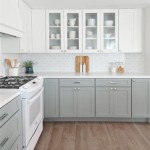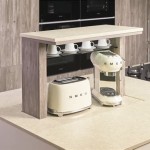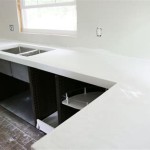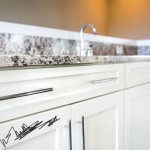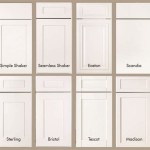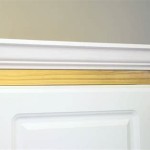Office Kitchen Cabinets: Optimizing Space and Functionality
The modern office environment increasingly recognizes the importance of employee well-being and productivity. A well-designed and functional office kitchen plays a crucial role in fostering a positive work atmosphere. Central to any office kitchen is the cabinetry, which not only provides storage but also contributes significantly to the overall aesthetic and organization of the space. Careful consideration should be given to the selection, design, and installation of office kitchen cabinets to ensure they meet the specific needs of the workplace and comply with relevant regulations.
Office kitchen cabinets differ from residential cabinets in several key aspects. They are often subjected to heavier use, requiring more durable materials and construction. The design must also accommodate a larger number of users and a wider range of storage needs, from individual lunches to shared office supplies. Furthermore, commercial kitchen spaces often involve stricter health and safety regulations, necessitating cabinets that are easy to clean and maintain.
The selection process should begin with a thorough assessment of the space available and the specific storage requirements. Consider the number of employees, the types of appliances that need to be accommodated (refrigerators, microwaves, coffee makers), and the volume of food and supplies typically stored. This assessment will inform the choice of cabinet types, sizes, and configurations.
Key Considerations for Office Kitchen Cabinet Selection
Choosing the right office kitchen cabinets is crucial for ensuring functionality, durability, and aesthetic appeal. Several factors must be considered to make an informed decision. These include material selection, hardware considerations, and ergonomic design.
Material Selection: The materials used in the construction of office kitchen cabinets significantly impact their durability, longevity, and ease of maintenance. Several common materials are used including laminate, wood veneer, solid wood, and metal.
Laminate cabinets are a popular choice for office kitchens due to their affordability, durability, and wide range of color and style options. Laminate is a synthetic material consisting of multiple layers of paper or fabric impregnated with resin and bonded to a substrate such as particleboard or MDF (Medium-Density Fiberboard). High-pressure laminates (HPL) are particularly resistant to scratches, stains, and moisture, making them suitable for high-traffic areas. Laminate cabinets are easy to clean and maintain, requiring only a damp cloth and mild detergent. However, they are generally more susceptible to damage from impacts and extreme temperatures than solid wood or metal cabinets. Edge banding is crucial for preventing moisture infiltration and ensuring the longevity of laminate cabinets.
Wood veneer cabinets offer a more natural aesthetic than laminate while remaining relatively affordable. Wood veneer is a thin layer of real wood bonded to a substrate, typically particleboard or MDF. Veneer cabinets provide the look and feel of solid wood at a lower cost. They are available in a variety of wood species, allowing for customization of the kitchen's appearance. However, wood veneer is more susceptible to scratches and moisture damage than laminate. Proper sealing and finishing are essential to protect the veneer and maintain its appearance. Veneer cabinets require regular cleaning and maintenance to prevent warping or delamination.
Solid wood cabinets are the most durable and aesthetically pleasing option, but also the most expensive. Solid wood offers superior strength, longevity, and resistance to damage. It can be easily repaired and refinished, extending the lifespan of the cabinets. Solid wood cabinets are available in a wide range of wood species, each with its own unique grain pattern and color. However, solid wood is susceptible to expansion and contraction with changes in humidity, which can lead to warping or cracking. Proper sealing and finishing are essential to protect the wood and maintain its stability. Solid wood cabinets also require regular cleaning and maintenance to prevent damage.
Metal cabinets, typically stainless steel, offer exceptional durability, hygiene, and a modern aesthetic. Stainless steel is resistant to corrosion, stains, and bacteria, making it an ideal choice for commercial kitchens. Metal cabinets are easy to clean and maintain, requiring only a wipe with a damp cloth. They are also highly resistant to impact damage. However, metal cabinets can be more expensive than laminate or wood veneer options. They can also be prone to fingerprints and smudges, requiring more frequent cleaning. Metal cabinets often require specialized installation techniques to ensure proper alignment and stability.
Hardware Considerations: The hardware used on office kitchen cabinets, including hinges, handles, and drawer slides, should be selected for durability and ease of use. Heavy-duty hinges and drawer slides are essential to withstand the frequent use of office kitchen cabinets. Soft-close hinges and drawer slides can help to reduce noise and prevent slamming. Handles and pulls should be ergonomic and easy to grip, even with wet or slippery hands. Consider using stainless steel or other corrosion-resistant materials for hardware to ensure longevity and prevent rusting. Regular inspection and maintenance of hardware are necessary to ensure proper function and prevent premature wear.
Ergonomic Design: The design of office kitchen cabinets should promote ergonomic comfort and efficiency. Consider the height of countertops and cabinets to minimize bending and reaching. Incorporate pull-out shelves and drawers to provide easy access to stored items. Ensure adequate lighting to improve visibility and prevent accidents. Designate specific areas for different types of storage, such as food, beverages, and cleaning supplies. Arrange cabinets and appliances in a logical and efficient layout to minimize unnecessary movement. Consider the needs of employees with disabilities and ensure that the kitchen is accessible and usable for everyone.
Optimizing Storage and Organization
Effective storage and organization are crucial for maintaining a clean and functional office kitchen. By implementing strategic storage solutions, businesses can maximize space, reduce clutter, and improve employee efficiency. Internal organizers, designated zones, and labeling systems each play a significant role in facilitating a well-organized office kitchen.
Internal Organizers: Internal organizers can significantly improve the functionality of office kitchen cabinets by maximizing storage space and minimizing clutter. Pull-out shelves and drawers provide easy access to stored items, eliminating the need to reach into the back of cabinets. Adjustable shelves allow for customization of storage space to accommodate different sizes of items. Drawer dividers and organizers help to keep utensils, dishes, and other small items neatly organized. Spice racks and other specialized organizers can help to keep food items easily accessible and prevent them from getting lost or damaged. Consider using clear containers to store food items, allowing for easy identification of contents. Regularly declutter and reorganize cabinets to remove expired or unwanted items.
Designated Zones: Creating designated zones within the office kitchen can help to streamline workflow and prevent confusion. Designate a specific area for food preparation, including countertops, cutting boards, and utensils. Create a separate area for beverage preparation, including coffee makers, tea kettles, and mugs. Designate a specific area for cleaning supplies, including dish soap, sponges, and paper towels. Create a separate area for waste disposal, including trash cans and recycling bins. Clearly label each zone to ensure that employees know where to find and store items. Regularly maintain and clean each zone to prevent the buildup of clutter and germs.
Labeling Systems: Implementing a clear and consistent labeling system can help to ensure that items are stored in the correct place and easily located. Label shelves and drawers with the names of the items stored inside. Use color-coded labels to differentiate between different types of items, such as food, beverages, or cleaning supplies. Use labels to identify expiration dates on food items. Use labels to indicate which items are for shared use and which are personal items. Regularly update labels as needed to reflect changes in storage arrangements. Ensure that labels are easy to read and understand.
Compliance and Maintenance
Adhering to health and safety regulations and implementing a consistent maintenance plan are essential for ensuring the longevity and hygiene of office kitchen cabinets. Regular cleaning, prompt repairs, and compliance with relevant codes are vital components of responsible office kitchen management.
Health and Safety Regulations: Office kitchens are subject to various health and safety regulations designed to protect employees from foodborne illnesses and other hazards. Ensure that all cabinets are made from materials that are safe for contact with food, such as stainless steel or food-grade plastic. Regularly clean and sanitize cabinets to prevent the growth of bacteria and mold. Store food items in airtight containers to prevent contamination. Dispose of expired or spoiled food items promptly. Ensure that cabinets are properly ventilated to prevent the buildup of moisture. Provide employees with access to handwashing facilities and encourage them to wash their hands frequently. Follow all local and national health and safety regulations related to food storage and handling.
Regular Cleaning: Regular cleaning is essential for maintaining the hygiene and appearance of office kitchen cabinets. Wipe down cabinets regularly with a damp cloth and mild detergent to remove dirt, spills, and fingerprints. Use a disinfectant cleaner to sanitize cabinets and prevent the spread of germs. Pay particular attention to areas that are frequently touched, such as handles and countertops. Clean up spills immediately to prevent staining and damage. Empty and clean cabinets regularly to remove crumbs and other debris. Consider hiring a professional cleaning service to deep clean the kitchen on a regular basis.
Prompt Repairs: Promptly addressing any damage to office kitchen cabinets can prevent further deterioration and extend their lifespan. Repair or replace damaged hinges, drawer slides, and other hardware. Fix any cracks or chips in cabinets to prevent moisture infiltration. Tighten loose screws and fasteners to ensure stability. Replace damaged or missing edge banding to prevent moisture damage. Apply touch-up paint or stain to cover scratches and blemishes. Consider hiring a professional repair service to address more complex repairs. Regularly inspect cabinets for signs of damage and address them promptly.

50 Home Office Designs With Kitchen Cabinets And Shelves Modern Storage Ideas Design Small Offices

Healthcare Cabinets Casework

Using Cabinetry To Create Your Home Office

New Trends In Office Kitchens Break Areas D2 Furniture Design

15 Commercial Office Cabinetry Ideas Cabinet Kitchen Cabinets

Office Cabinets Cabinet World Of Pa

Using Cabinetry To Create Your Home Office

Kitchen Cabinets Display Office Storage Sideboard Free Delivery Furniture Home Living Shelves Racks On Carou

Hc 103 Full Height Kitchen Cabinet Storage Cupboards Office Document Display

Henry Home Office Built In Kitchen Desks
Related Posts

